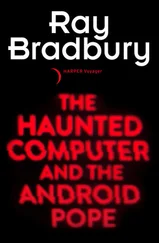Bricklin, a former professional programmer, suspected that the tedium involved in preparing these projections would be enormously relieved if their required calculations and cross-indexing were programmed for a microcomputer to do. He then took his idea to Frankston, an even more accomplished programmer. They worked on the program together, and the result, in October 1978, was the first prototype of VisiCalc. Their enormously successful software development company, Software Arts, was born.
As it turns out, one of Bricklin’s classmates at the Business School had his own small software publishing firm. His name was Dan Fylstra, and he had recently started Personal Software as a means of selling the Micro Chess program written by his partner, Peter Jennings. When Fylstra saw Bricklin and Frankston’s creation, he invited them to a business meeting at a Chinese restaurant in Cambridge. There the cofounders of Software Arts agreed to produce an Apple-compatible version of VisiCalc that would be marketed by Fylstra and Jennings's firm.
Several years later, the two companies found themselves in a bitter conflict, the substance of which will be discussed later. But in the meantime, the early 1980s were exceptionally lucrative years for all parties involved. Apple, although initially skeptical about the usefulness of VisiCalc, ended up selling millions of computers to businesspeople who wanted to perform spreadsheet analysis and were interested in a tool that could help with their hardest task—predicting the future. Frankston and Bricklin made close to $10 million as a result of that agreement in a Chinese restaurant. And microcomputer software as a whole was becoming a far bigger business every week, largely as a result of their program.
At about the same time that the spreadsheet entrepreneurs were programming in Massachusetts, another enormously influential and lucrative program was created in California. Seymour Rubinstein, one of the earliest hardware entrepreneurs, had recently left the ill-fated IMSAI corporation (which folded in 1979, a victim of its marketing strategy, its erratic hardware, and competition from more advanced machines) to start his own company, MicroPro. Sometime after he published a filing program and a primitive word-processing program, he received several letters from people asking for a more powerful text editing program, like Michael Shrayer’s Electric Pencil, which was the first commercial microcomputer word processing program.
Rubinstein, like any smart entrepreneur, responded to the needs of the market. He commissioned a top-notch programmer by the name of Rob Barnaby to create a wordprocessing program called WordStar. The program was released in mid-1979. It became an instant hit and was near the top of every best-seller chart until early 1985.
By 1983, MicroPro’s revenues had exceeded $50 million, making it, by some people’s estimates, the largest microcomputer software company in the world. But the question of whose estimates one wants to believe is a notorious trigger for heated debate among software people. Trying to arrange companies in rank order is a tricky exercise, especially in such a volatile industry. When this book was written MicroPro and Microsoft were running neck-and-neck for the number one spot, but MicroPro was facing internal problems and Microsoft was still coming on strong. By the time this book is published, the top slot on the charts may well have changed.
But regardless of this ongoing conflict over estimates, there is one point on which there has never been any dispute between the market gurus and prognosticators: In everybody’s opinion, WordStar was an all-time runaway moneymaker. The success of this program demonstrated that a single piece of intellectual property, created by a single individual, could bring in revenues of hundreds of millions of dollars in just a few years.
Word processing was a revolution unto itself. Indeed, because of word-processing software, a major change in society took place in a very short period of time. In 1979, only the largest business offices had computers—and those were always enclosed in special rooms, somewhere off in the data processing department, and were tended and administered to by computer experts. But some years later, there were in many offices more computers than typewriters, and you would be hard-pressed to find many businesses of reasonable size that didn’t have at least one word processor. In the years following WordStar’s introduction, that venerable institution, the typing pool, began to disappear; and in general, the way people in offices and universities deal with text was irrevocably altered.
By the early 1980s, the business world was adopting word processing on a large scale. By the mid-1980s, with the advent of low-cost word-processing software like Broderbund’s Bank Street Writer, word processing has begun to saturate the home market. And by the late 1980s, the typewriter may be on its way to the museum along with other obsolete curiosities like slide rules.
The third category of microcomputer software that took off in the late 1970s was geared for entertainment and was not business-oriented at all. The arrival of the first simulation games provided unexpected and, to many, far more exciting reasons for using a computer. A simulation, in terms of a computer, refers to a program that presents a realistic model of a process, an object, a series of events, a real world, or a hypothetical universe. Mathematical representations underlie all simulations, which is why computers are necessary to keep track of even a simple simulated universe. The model itself is presented on a screen or paper printout in the form of words and numbers or even in graphically displayed patterns.
Computer simulation techniques were originally developed for serious purposes like designing airplanes. That they could also be used as the basis for a particularly addicting variety of recreation—the fantasy simulation—was a fact initially recognized by a gleeful and talented bunch of young men who ran amok on MIT’s computers more than twenty years ago. In fact, most software people agree that the term hacker originated with those early programmers, who seem to have discovered everything from the “serious” computerized gaming of chess programs to the purely recreational field of computer graphics games.
But these programmers, many of them MIT dropouts, had nevertheless been hired by MIT’s computer development laboratories because of their prodigious programming ability. Not only was the software for the first interactive computer systems their creation, but artificial intelligence research, the construction of time-sharing software systems, and other landmarks in software development and computer science all came out of the hackers’ headquarters in Cambridge’s Technology Square. They were renowned for their accomplishments in advancing computer research and notorious for their irreverent attitudes and often unorthodox lifestyles.
And of course, while doing their more purposive work, they also delighted in finding ways to use computers to play games of various kinds. In 1961, for example, they got their hands on the first minicomputer, the PDP-1, which had a large, round video display screen, and they started playing around with different programs that would demonstrate the machine’s graphic capabilities. One hacker, Stephen Russell, who was known to his cohorts as “Slug,” came up with the idea of simulating spaceships on the screen. He had been reading science fiction novels about space battles, so he included a means of controlling the spaceship’s flight patterns and a means of shooting down other ships. Meanwhile, another hacker by the name of Peter Samson created a realistic depiction of a star field as a background to the spaceships. The game Spacewar was born. Years later, Spacewar, as well as some other games that were originally designed by hackers at MIT and elsewhere, would form the basis of billion-dollar industries.
Читать дальше










